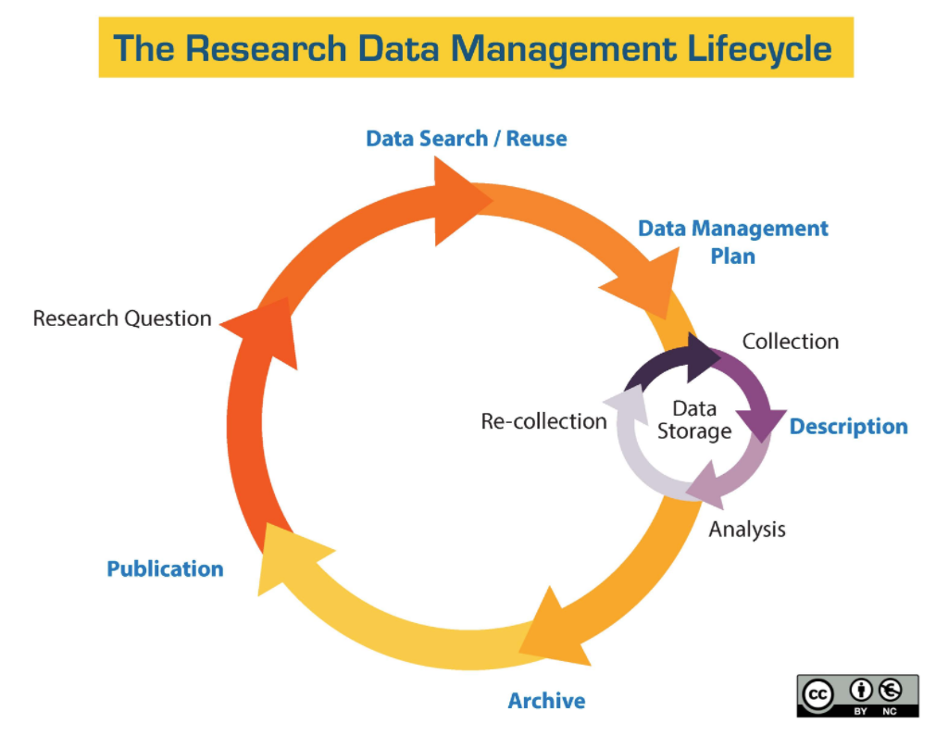Research Data Management
Introduction
What is research data curation?
Research data curation refers to the series of decision points and activities related to creating, managing, sharing, and preserving the digital files that comprise your research materials. The complete set of research activities is often referred to as the “research lifecycle.” At each point in the lifecycle, researchers make important decisions about digital tools and software, publication and collaboration platforms, data repositories, and file organization and naming conventions. Researchers invest substantial time, effort, and funds into their work, so it is useful to have a plan for managing and protecting data. Researchers must also consider how to share their work and secure long-term digital storage for research products such as articles and datasets.
What is digital preservation?
Digital objects are particularly vulnerable to loss, whether through bit corruption, file format obsolescence, lack of context and documentation (metadata), or inadequate preservation. Developing a plan for preserving your digital media and research data helps mitigate some of these risks and ensures that data remains accessible and usable over the long term.
Data curation at a glance
- Ensures reproducibility of data as the basis of validation of scholarly output, accountability, and record-keeping
- Adds context and value to digital objects so they can be discovered and reused
- Supports cross-disciplinary collaboration for the preservation of digital media and research data
- Supports open-source solutions for sharing and preserving research
- Helps researchers design projects with sustainability in mind
Source: Oliver, G. and Harvey, R. (2016). Digital Curation. Chicago: Neal Schuman.
What support does DISC provide to faculty and students to help them manage and preserve scholarly data?
- Assist faculty researchers and digital media creators with data management plans
- Help develop data management plans for collaborative faculty-student projects
- Provide technical assistance for metadata creation and maintenance
- Offer workshops in data-management planning (DMP) and the research data management lifecycle
- Develop customized plans for the long-term preservation of research data, including repository guidance
- Share online resources for learning about scholarly data curation
- Preserve faculty scholarship in WakeSpace and provide consultations about external data repositories
Where can I learn about best practices for managing my data?
- Read our research guide: Managing Research Data
- Learn more about managing data at researchdata.org (external link)
Image CC BY-NC from University of Southern California Santa Cruz
